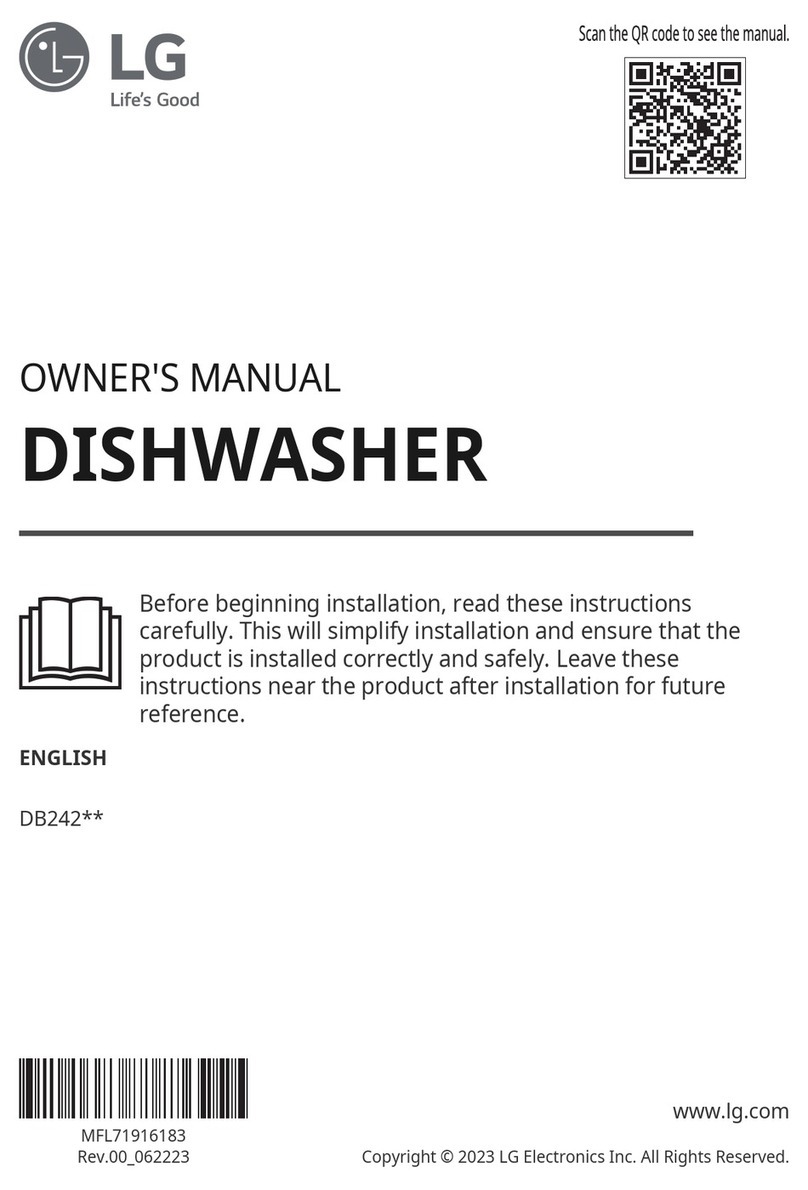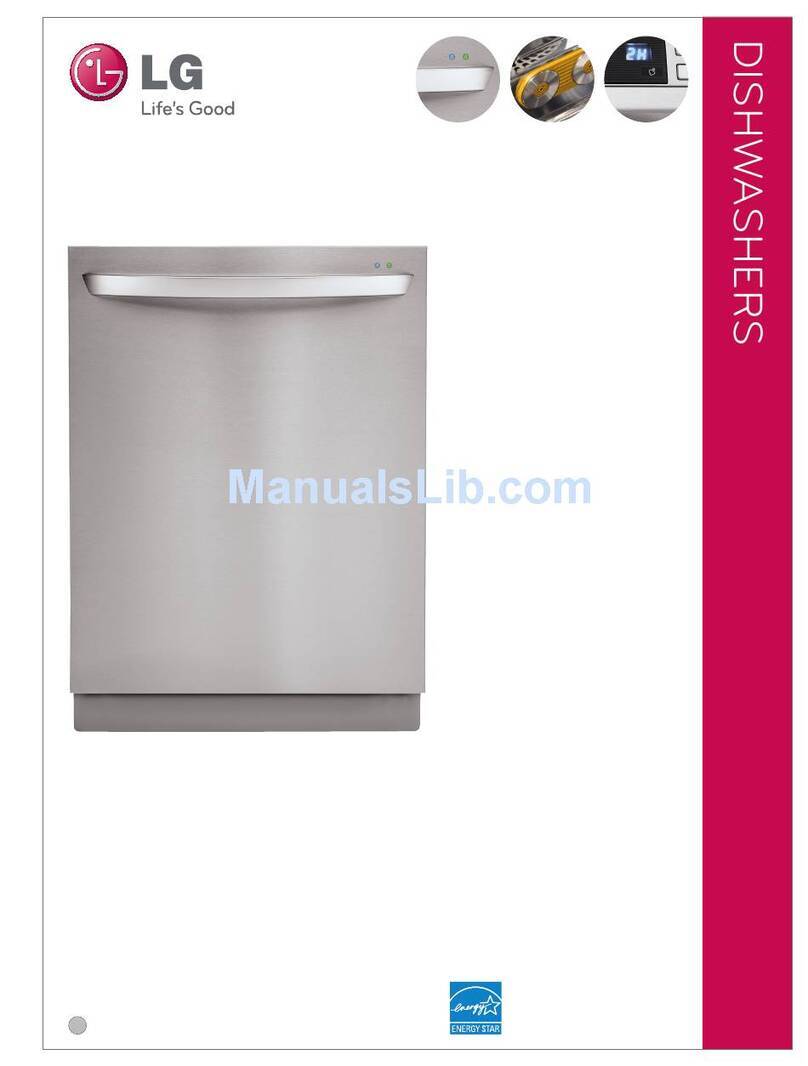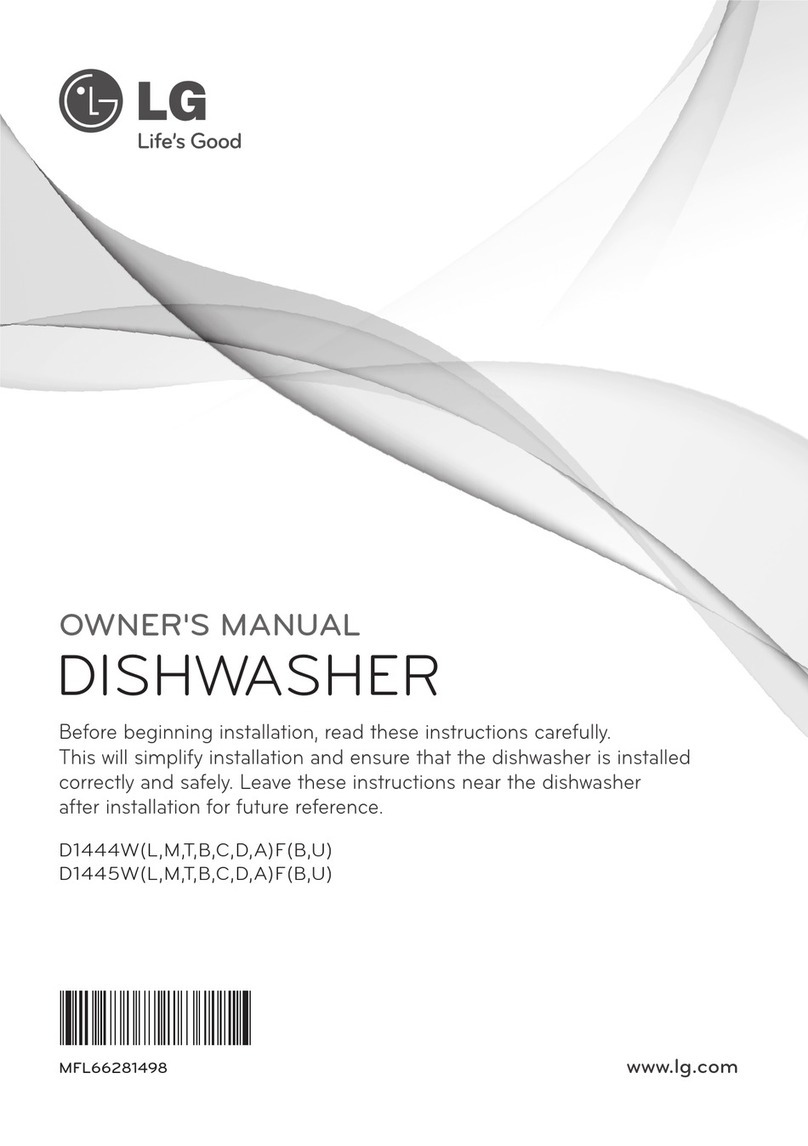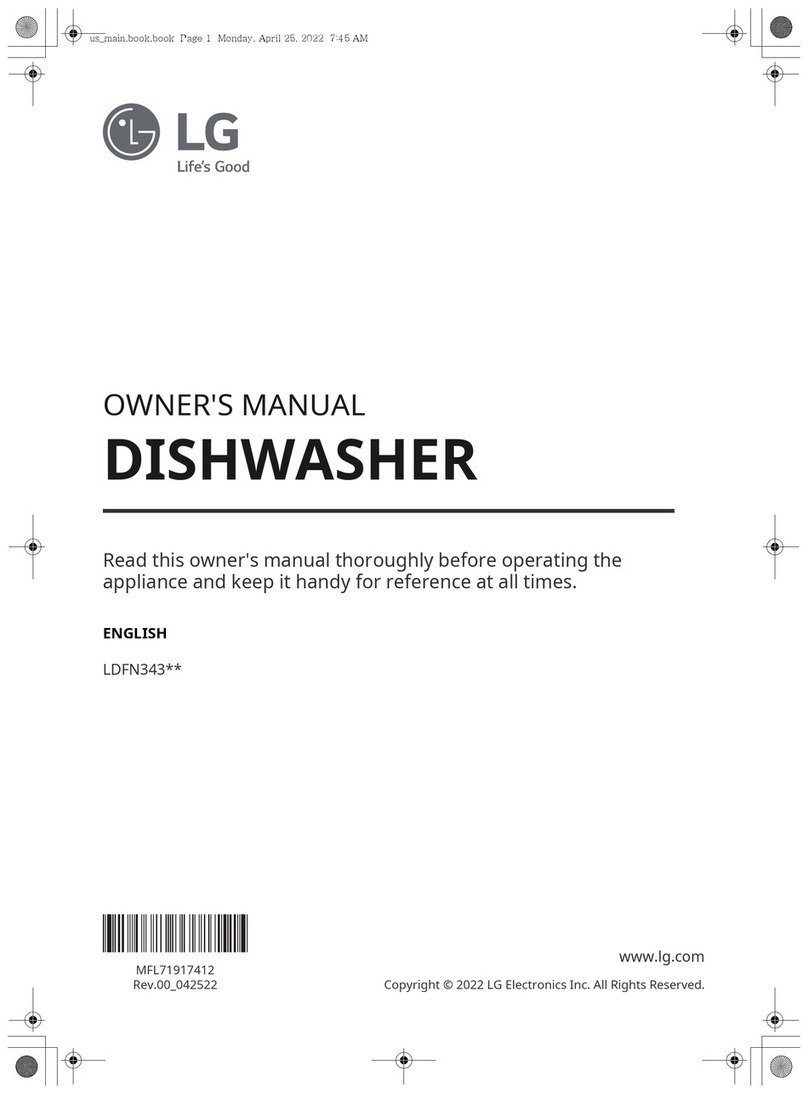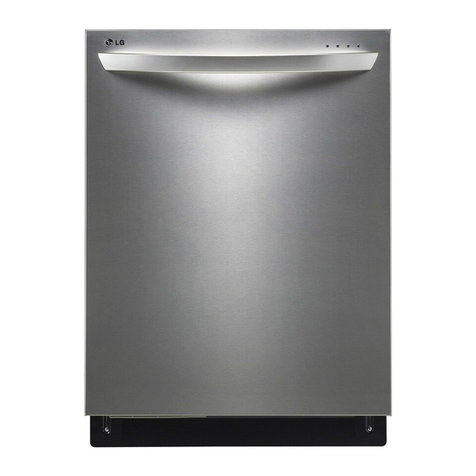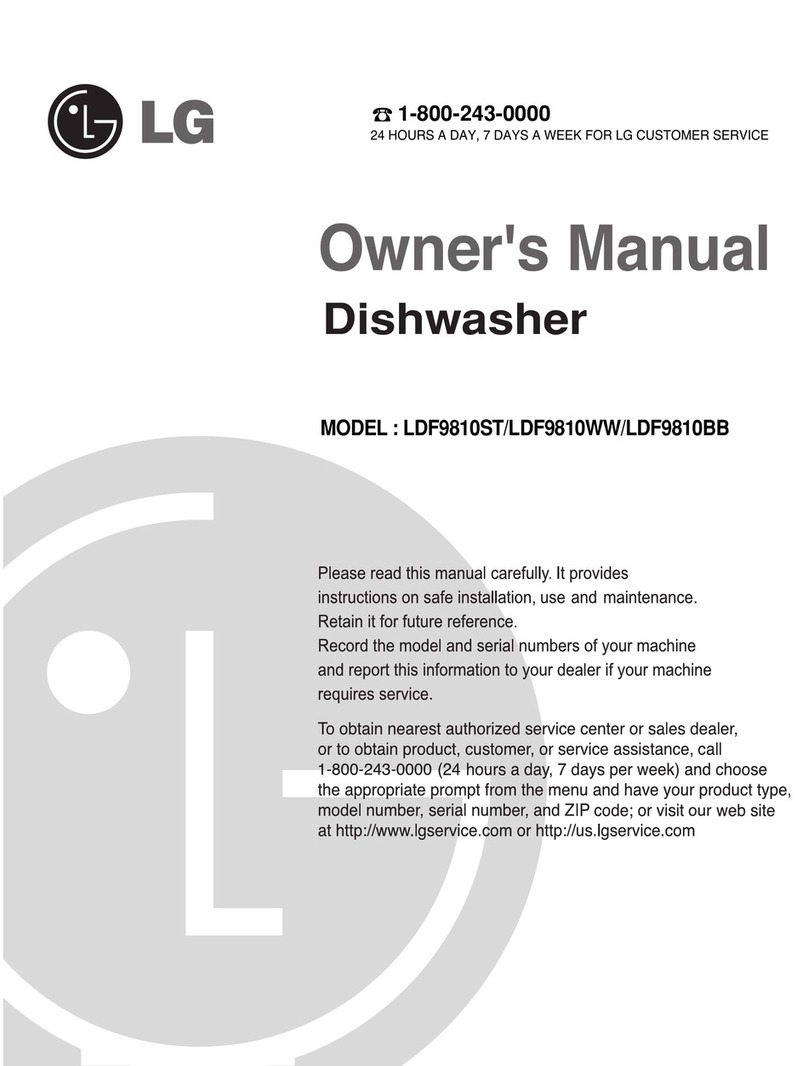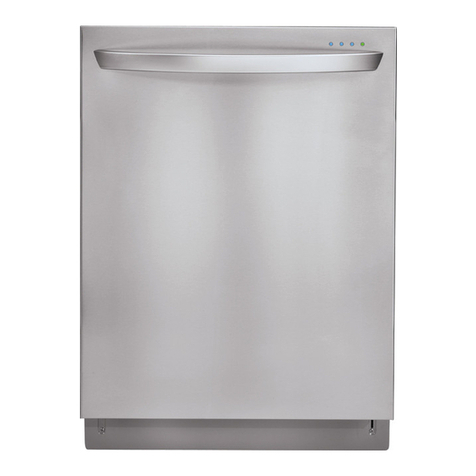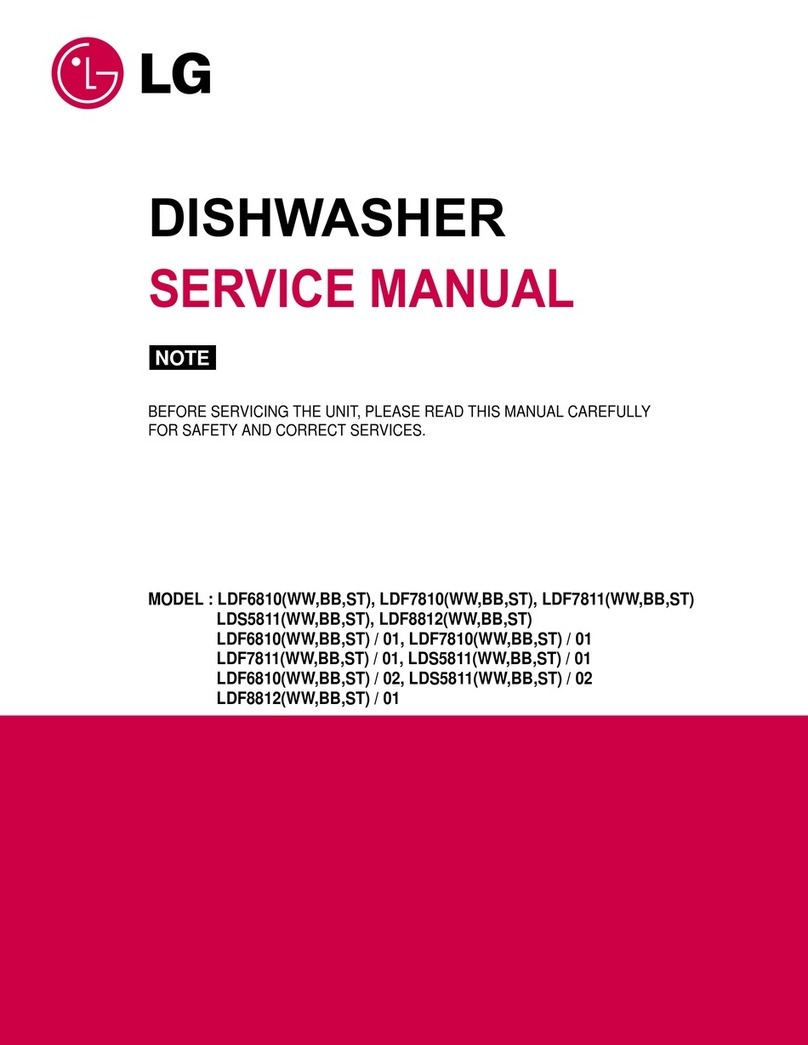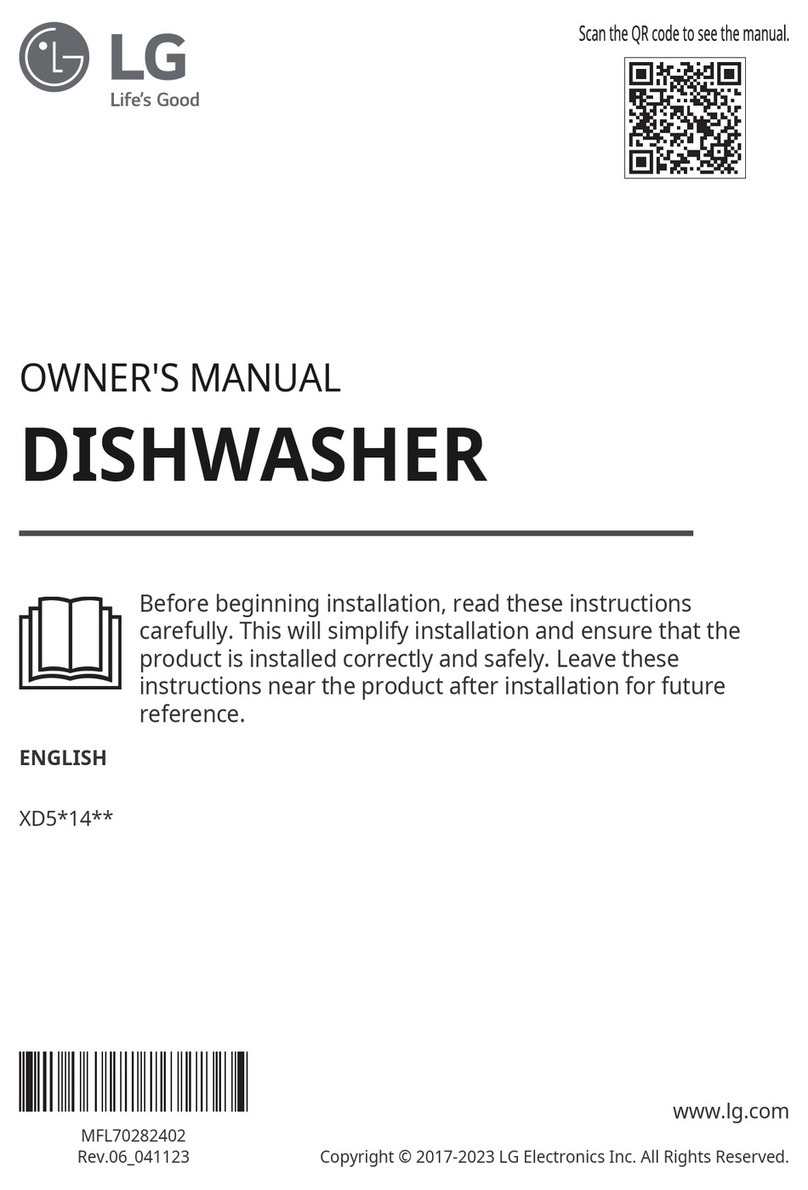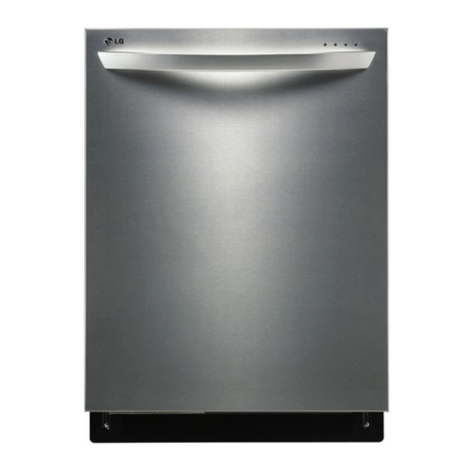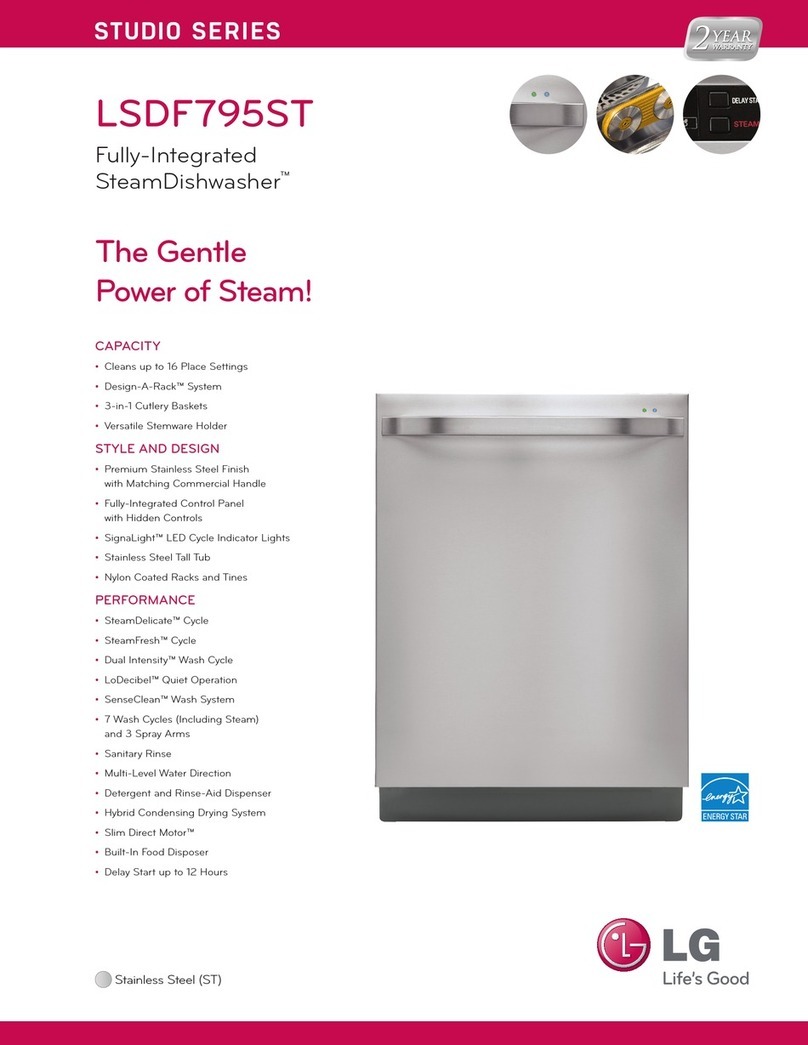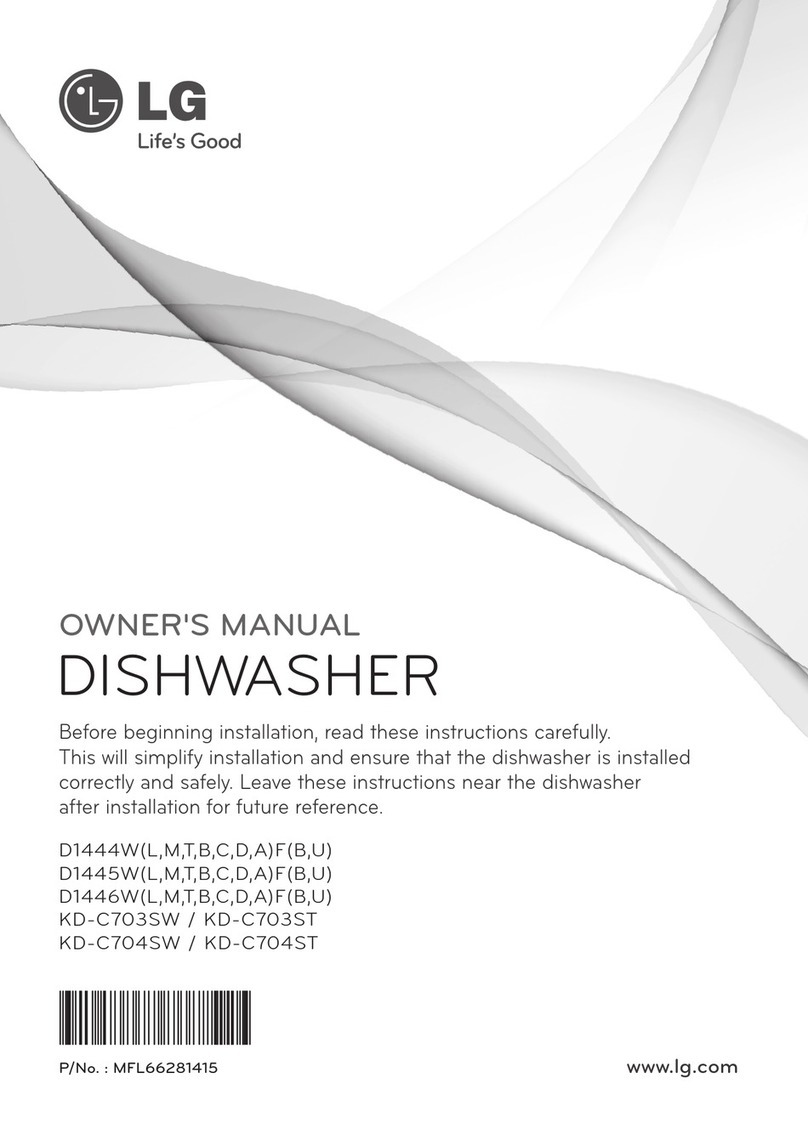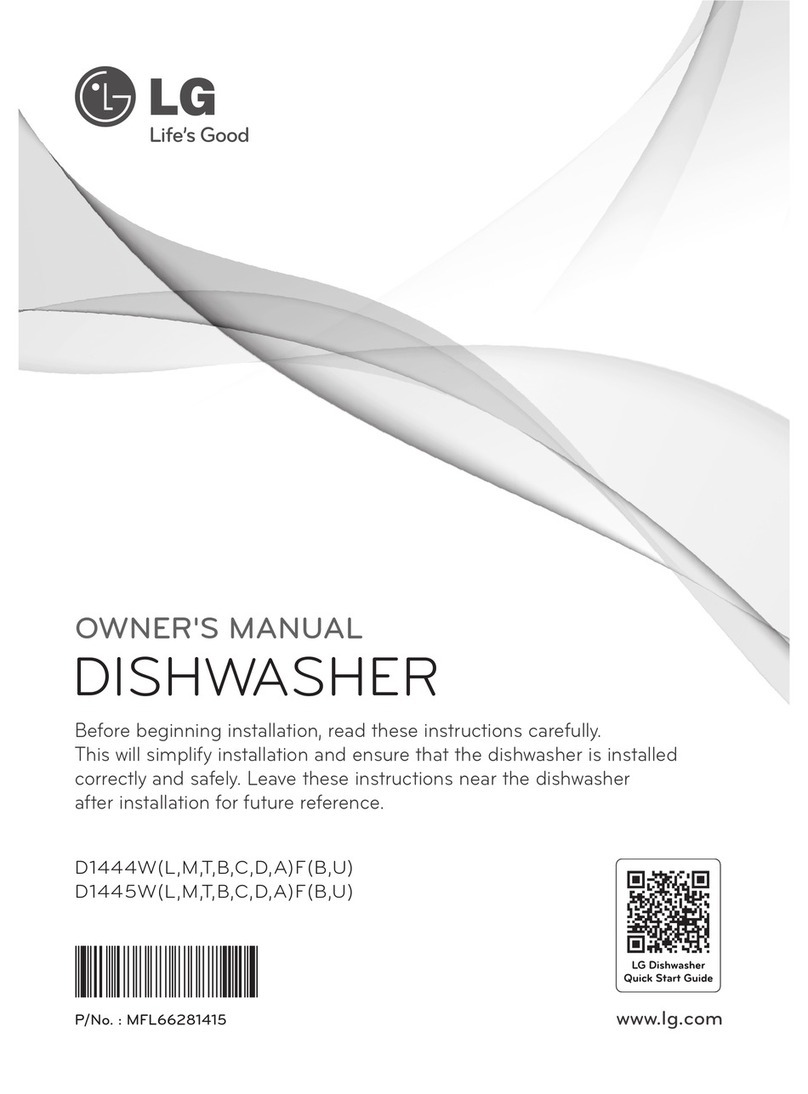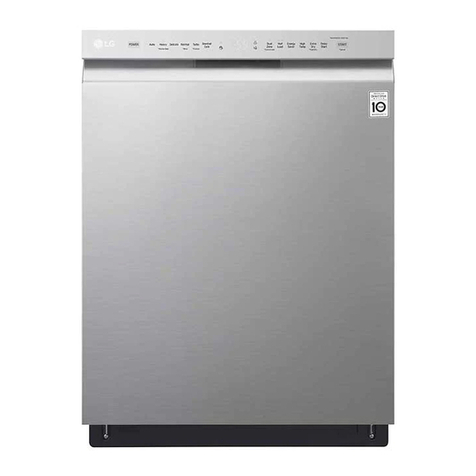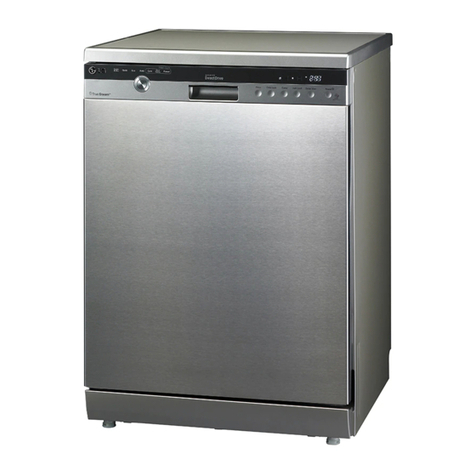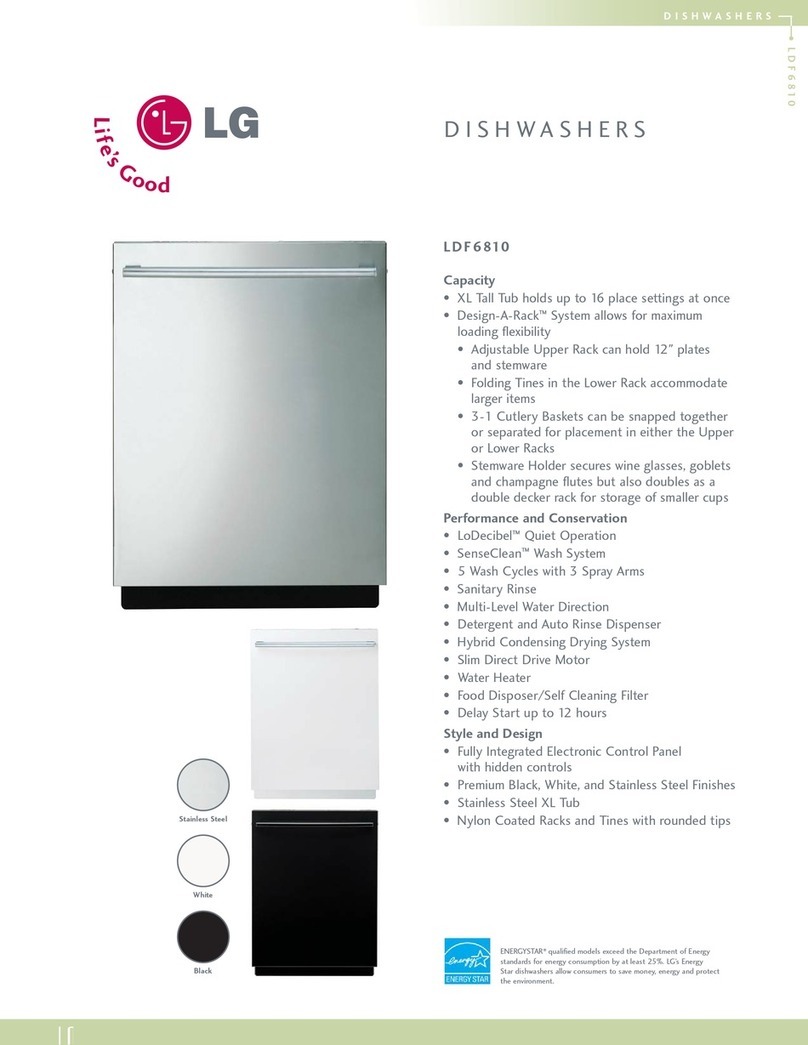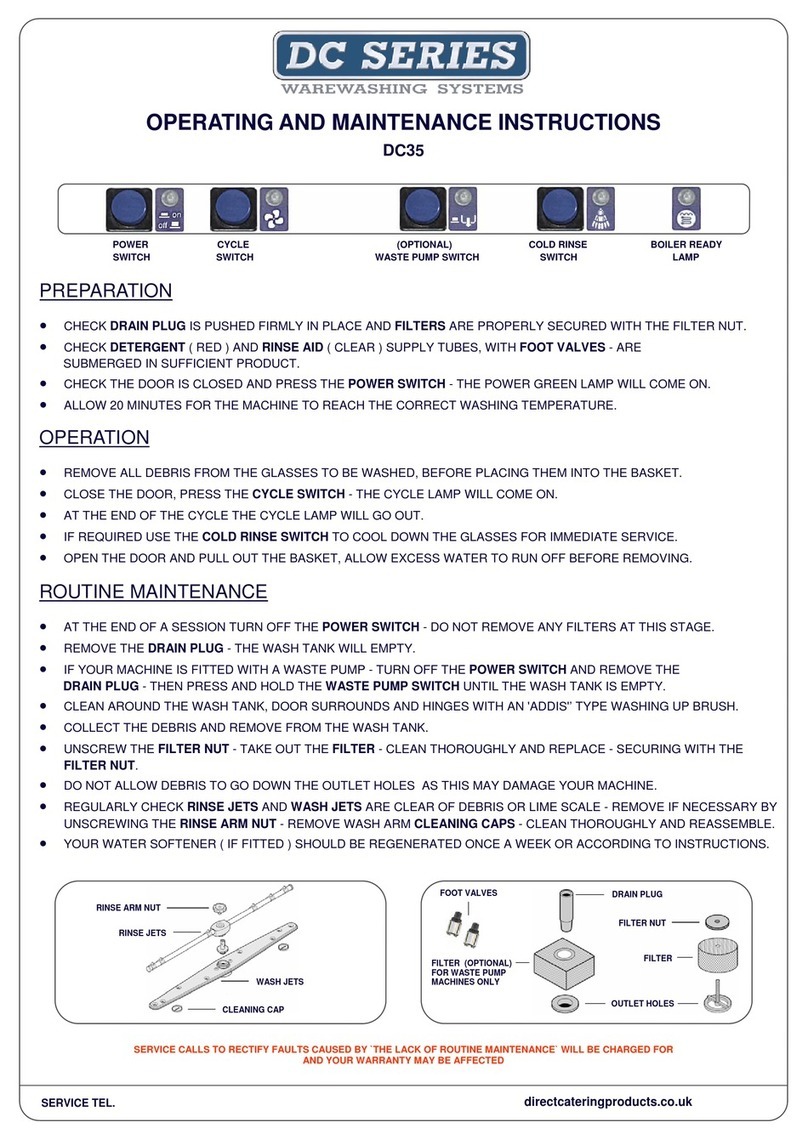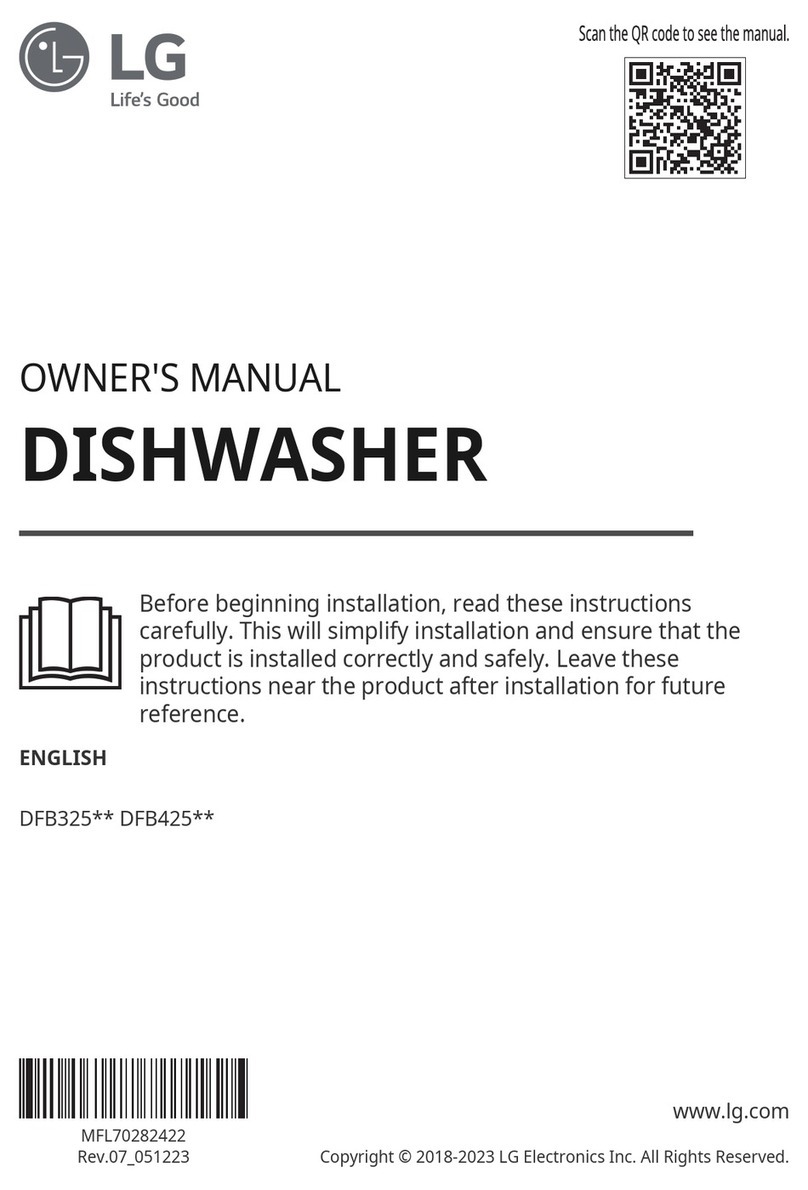3
SAFETY AND CAUTION
• Please read this manual carefully before
using the dishwasher for the first time.
• This manual contains very important
notes regarding the installation, use and
maintenance of your dishwasher.
• The manufacturer can not be
responsible for problems caused by
ignoring these safety and caution
instructions.
• This dishwasher is designed for normal
household use.
• Do not use the dishwasher for industrial
and commercial use, or other purpose.
• The appliance is not intended for use
by young children or infirm persons
without supervision.
During installation
• Electrical connection must be in
accordance with the rating label.
• Electrical safety is only guaranteed
when the earth system of your house is
in accordance with the related local
regulations.(Do not use an extension
cable or cord.)
• If the hot water exceeds 65ºC, adjust
the water heater setting. If the hot water
temperature can not be maintained
below 65ºC, the dishwasher must be
connected to cold water.
• If power supply cord is damaged, it
must only be replaced by the
manufacturer or its service agent or a
similar qualified person in order to
avoid a hazard.
• This appliance must be positioned so
that the plug is accessible.
• The appliance is to be connected to the
water mains using new hose-sets and
that old hose-sets should not be reused.
During use
• Only suitable household utensils should
be placed in the dishwasher.
(Please avoid utensils; that are non-
heatresistant, metal decorated, etc.)
• Do not use any kinds of solvent in your
dishwasher. They may cause an
explosion or fire.
• Do not spray water on the appliance.
It may cause the failure of electric parts
or electric shock.
• Do not push down or sit on the inner
door when the door opened. It may
cause the deformation or failure of your
dishwasher.
• Do not use the detergent for hand
washing.
The detergent for dishwasher should be
used for normal operation.
• This appliance is fitted with a safety
function that automatically stops the
operation of the dishwasher when it is
exposed to heavy disturbance on its
mains.
• Dishwasher detergents are strongly
alkaline. They can be extremely
dangerous if swallowed. Avoid contact
with skin and eyes and keep children
away from the dishwasher when the
door is open.
Check that the detergent receptacle is
empty after completion of the wash
cycle.
IMPORTANT SAFETY INSTRUCTIONS
WARNING - When using your dishwasher, follow basic precautions,
including the following:


